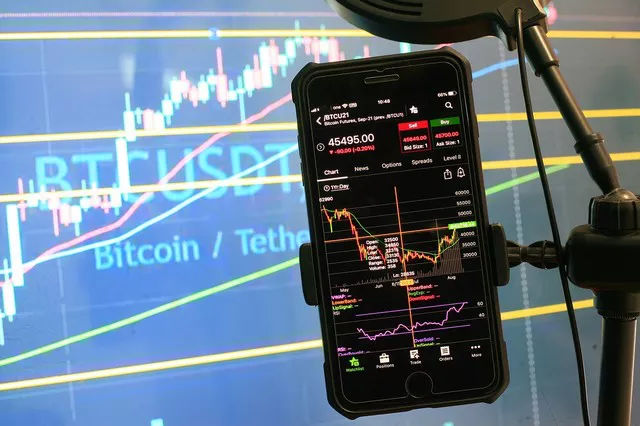The world of financial markets is in a perpetual state of motion, with trading activities spanning various asset classes and regions. Futures trading, a cornerstone of this dynamic landscape, allows investors to speculate on price movements and manage risk. To gain a deeper understanding of the present state of futures trading, it is essential to explore the factors that currently influence the market, the prevalent trends, and the impact of global events on trading activities.
Market Sentiment and Economic Indicators
The current state of futures trading is influenced by a combination of market sentiment and key economic indicators. Sentiment is a reflection of market participants’ collective perception of the current economic environment and future prospects. Positive sentiment often drives bullish trading activities, while negative sentiment can lead to bearish tendencies.
Economic indicators, such as GDP growth, unemployment rates, inflation data, and central bank decisions, play a pivotal role in shaping market sentiment. For instance, a stronger-than-expected employment report can boost investor confidence and contribute to bullish trading across various futures contracts, while signs of economic weakness might trigger a more cautious approach.
Volatility and Asset Class Trends
Volatility, the degree of price fluctuations within a market, is a critical factor in futures trading. Currently, the level of volatility across different asset classes can influence trading strategies and risk management decisions. Higher volatility presents both opportunities and challenges, as traders seek to capitalize on price swings while managing the increased risks associated with such movements.
In recent times, certain asset classes have experienced noteworthy trends. For example, during times of global uncertainty, commodities like gold and oil often attract heightened attention from traders seeking safe-haven assets or opportunities in volatile markets. Similarly, equity index futures might witness increased activity as investors respond to news related to corporate earnings, geopolitical events, or macroeconomic developments.
Global Events and Geopolitical Influences
Global events and geopolitical factors play a substantial role in shaping the current landscape of futures trading. Events such as elections, trade negotiations, natural disasters, and geopolitical tensions can lead to sudden shifts in market sentiment and trading activity.
For instance, announcements related to trade agreements between major economies can impact futures contracts linked to currencies, commodities, and indices. Geopolitical tensions in oil-producing regions can trigger price spikes in oil futures contracts, affecting energy markets worldwide. In response to these events, traders often adapt their strategies to align with emerging opportunities and risks.
Digital Transformation and Technological Advancements
The landscape of futures trading is continuously evolving with the integration of advanced technologies. Digital transformation has revolutionized trading processes, enabling faster execution, real-time data analysis, and enhanced risk management. Electronic trading platforms, algorithmic trading, and artificial intelligence (AI) have all contributed to shaping the current state of futures trading.
The rise of algorithmic trading, driven by AI and complex algorithms, has led to increased trading automation. Algorithms can execute trades based on predefined criteria, optimizing entry and exit points. Additionally, high-frequency trading (HFT) strategies thrive in the fast-paced world of futures trading, as traders leverage technology to capitalize on even the smallest market inefficiencies.
Regulatory Developments and Compliance
Regulatory developments and compliance requirements play a crucial role in shaping the current landscape of futures trading. Regulatory authorities strive to maintain market integrity, safeguard investor interests, and prevent systemic risks. Changes in regulations can impact trading practices, margin requirements, and reporting obligations.
Market participants need to stay informed about regulatory changes that can impact their trading activities. Compliance with regulatory standards ensures transparency and accountability in futures trading, enhancing market stability and investor confidence.
Investor Behavior and Long-Term Trends
Investor behavior, influenced by a myriad of factors including economic conditions, technological advancements, and societal shifts, contributes to the current state of futures trading. The proliferation of online trading platforms, increased accessibility to information, and evolving preferences are shaping how investors approach futures trading.
Long-term trends, such as the growing interest in sustainable investing and environmental, social, and governance (ESG) considerations, are also influencing the futures trading landscape. Traders and investors are seeking opportunities that align with their values and long-term goals, shaping the demand for specific futures contracts linked to sustainable assets or commodities.
Conclusion
The current state of futures trading is a product of various dynamic and interrelated factors. Market sentiment, economic indicators, asset class trends, global events, technological advancements, regulatory developments, investor behavior, and long-term trends all contribute to shaping the ever-evolving landscape.
Staying informed about these factors is crucial for traders and investors seeking to make informed decisions in the futures market. As the financial world continues to evolve, participants must adapt their strategies, leverage technology, and monitor global developments to navigate the complexities and seize opportunities in the dynamic world of futures trading.


